The Hottest Hit On The Planet…
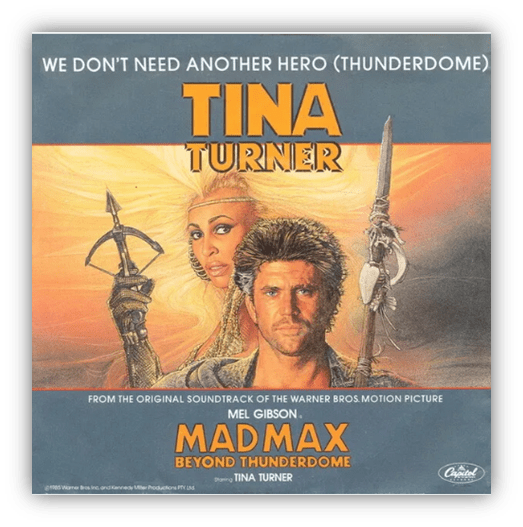
It’s “We Don’t Need Another Hero (Thunderdome)”
by Tina Turner
“Do you know who I was?” Tina Turner asks Mel Gibson, when they met in her apocalyptic penthouse, towering above Bartertown.
“Nobody. Except on the day after, I was still alive. This nobody had a chance to be somebody.”
Tina Turner had been a nobody went she was growing up in Nutbush, Tennessee, on Highway No. 19. 25 was the speed limit. Motorcycles weren’t allowed in it.
She had been a nobody when she had forced herself into Ike Turner’s band, grabbing the microphone off of the drummer and taking over the show.
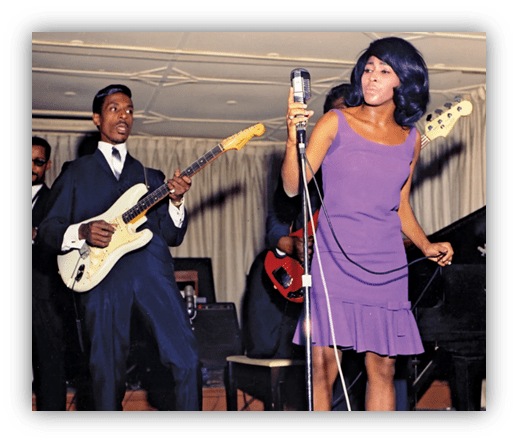
After that, she wasn’t a nobody anymore.
Later on, Tina had escaped an abusive marriage with Ike Turner.
Fleeing from a Dallas hotel room with only 34 cents in her pocket. 34 cents, and – for most of the next decade – no hits. She had to decamp to Europe to find an audience. One day she was cock of the walk, the next she was a feather duster.
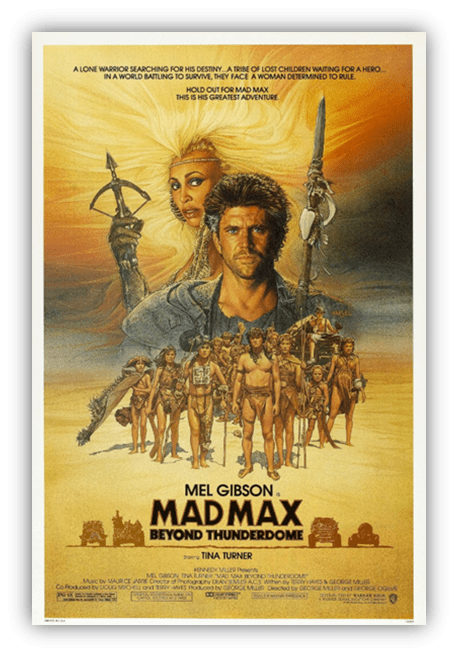
I didn’t come up with that line, it’s another Tina line from Mad Max: Beyond Thunderdome, part of the pinnacle of her impossible 80s comeback:
The third installment of a series about Max Rockatansky, an ex-policeman driving around an apocalyptic landscape that looked strangely like the area where I grew up (because it was), as the world turns to dust, constantly being dragged into the role of hero, when all he’s really interested in is filling his tank so that he can keep on driving.
The other component of Tina’s pinnacle was being the oldest women to score a Billboard Hot 100 Number One – until fellow survivor Cher knocked her off her perch over a decade later. That Number One was “What’s Love Got To Do With It?”, a mixture of reggae flavoured synth burbles, and the wisdom that comes with middle-age (it’s a 7.)
Tina, whose chart fortunes had never been as impressive as you might think – a handful of R&B hits in the early 60s here, a “nice and rough” cover of “Proud Mary” there, “River Deep, Mountain High” had famously been a flop, a case of being too Black for white radio and too white for Black radio, except in the UK, where they got it right! – managed to grab a Number One right at the peak of the MTV boom, when looking bright and colorful was the only thing that was important.
Fortunately for Tina, she now had bright and colourful hair.
A hairdo just as iconic as the one the Flock Of Seagulls guy had!

A hairdo so iconic that it seems to be the primary inspiration for every Halloween 80s rockstar wig. Appropriate really since it turns out that it really was a wig! BUT WHAT A WIG!!!!
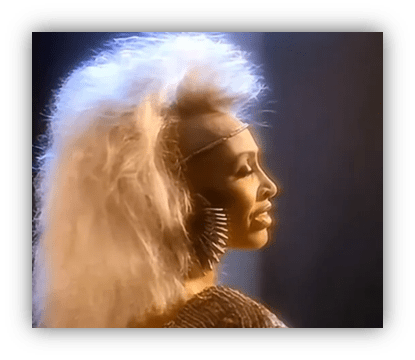
Tina’s wig was even more fabulous in “We Don’t Need Another Hero (Thunderdome.)”
The “Thunderdome” is an official part of the title. Tina sings it in the chorus.
There may be other movie-tie-in hits that are more blatant, but there can’t be many. It isn’t just blatant marketing though; the song actually pushes forward the plot. Or would have if this were a musical, and one of the kids had sung it, instead of it playing over the closing credits. Or if it didn’t completely contradict the plot.
Sadly, in order to explain this contradiction, we need to introduce the Lost Tribe of Planet Erf:
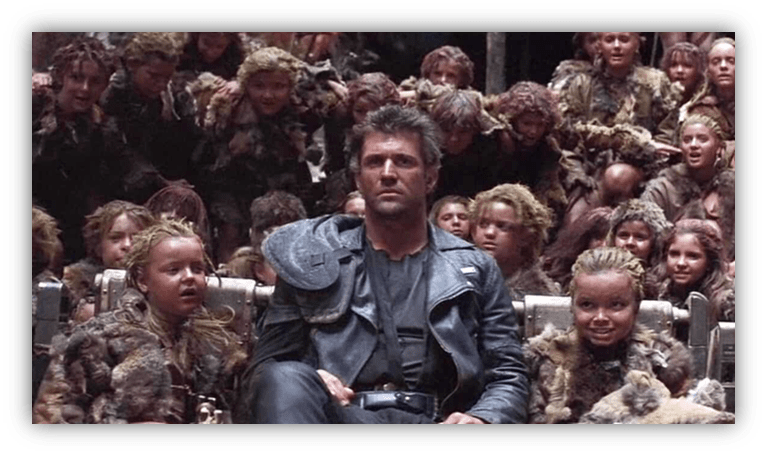
The children who say, “We don’t need another hero,” even though they do.
Everybody hates the Lost Tribe of Planet Erf. For those of you who have never seen Mad Max Beyond Thunderdome and are not up on your Mad Max lore, the Lost Tribe are basically the Ewoks of the Mad Max-verse. They are a group of children, the survivors of a crashed 747, who have formed a society in the wilderness, based on what scraps of knowledge – including scraps of the English language – they were able to understand before their parents left them to look for help and they lost contact with what few members of the human race remained.
They were the children. The last generation. They were the ones they left behind.
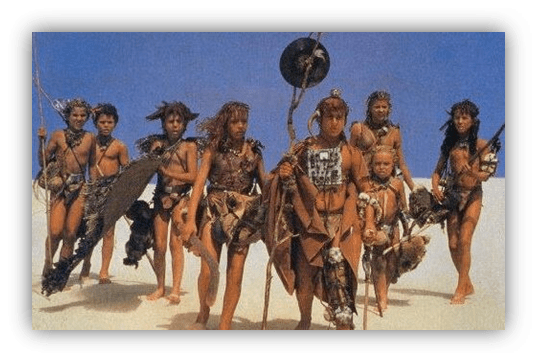
Specifically they were left behind by their parents who went off to search for whatever remained of civilization, before presumedly dying in the desert. Not only their parents, but the pilot as well: Captain Walker.
One of the sacred beliefs of The Lost Tribe Of Planet Erf is that one day, Captain Walker would come back for them. He was the hero that they needed. The kids believe that Max – who they found dying in the desert after Tina Turner threw him out of the town she ruled – is that Captain Walker.
Although they are annoying, let’s let the kids tell the tell:
So the kids need a hero. They may not need another hero, but they certainly need one.
They also needed to know the way home… or at least they wanted to know the way back to Sydney, or as they put it, Tomorrow-morrow Land.
They get there in the end, it is, of course, all in ruins, and yet they still believe in their hero, Mad Captain Max Walker.
This is where “We Don’t Need Another Hero (Thunderdome)” starts to make even less sense than Mad Max Beyond Thunderdome, and let me be clear, Mad Max Beyond Thunderdome makes no sense.
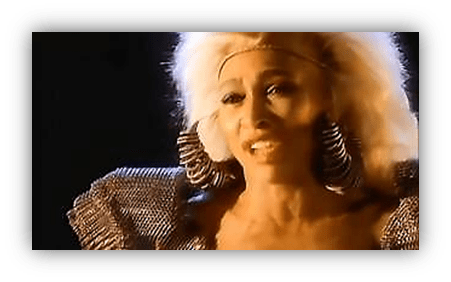
Tina Turner is singing from the point of view of the kids, even though, in the movie, she is effectively their arch nemesis. That makes no sense.
“We Don’t Need Another Hero (Thunderdome)” is a theme song that contradicts the entire premise of the movie it’s a theme song for.
Had the writers of the song – the same team that had put “What’s Love Got To Do With It?” together, in case you couldn’t tell from the vaguely-reggae synthesizer bubbles – even read the script?
Now, to be fair, maybe “We Don’t Need Another Hero (Thunderdome)” is a song about how the only hero the children need is Mad Captain Max Walker, but that’s not the impression anyone could possibly get from the song. “
We Don’t Need Another Hero (Thunderdome)” sounds like a protest song against the very idea of heroes.
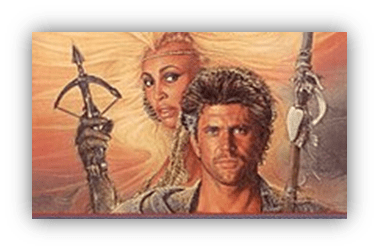
It sounds like the work of people who once believed in heroes, perhaps they believed in them too much, but those heroes disappointed them, so now they are OVER IT! I’ve had enough with these heroes… get them out of their sight!
Tina sells “We Don’t Need Another Hero (Thunderdome)” despite her surely being aware that she was undermining and contradicting the entire premise of the plot. Or maybe not. After all, nobody else on the planet has been able to make head nor tail out of this movie, why should Tina be the only one to know what’s going on, even if she is starring in it?
But although Tina sounds convincing, she is wrong.
We DO need a hero! We need Tim Capello, providing “We Don’t Need Another Hero (Thunderdome)” with the one thing a cheesy 80s pop hit needs to make it even cheesier:
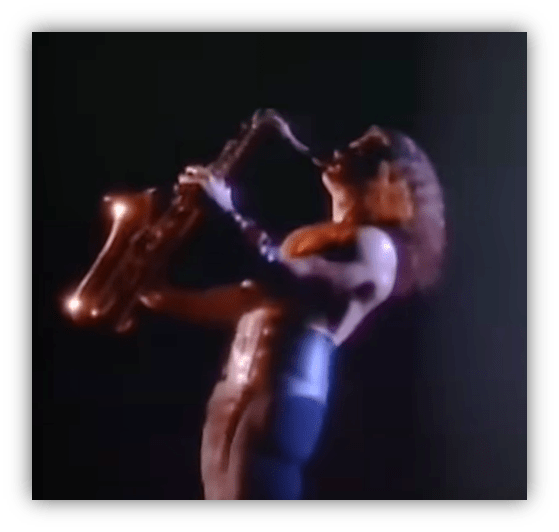
A saxophone solo. Specifically one played by an oiled-up muscleman beefcake.
And I know what you are wondering: Because surely there can’t be two oiled-up musclemen saxophone guys in the 80s, is this the same oiled-up muscleman saxophone guy as the one in The Lost Boys?” Not to be mistaken for The Lost Tribe Of The Planet Erf.
And I’m happy to tell you that indeed it is!
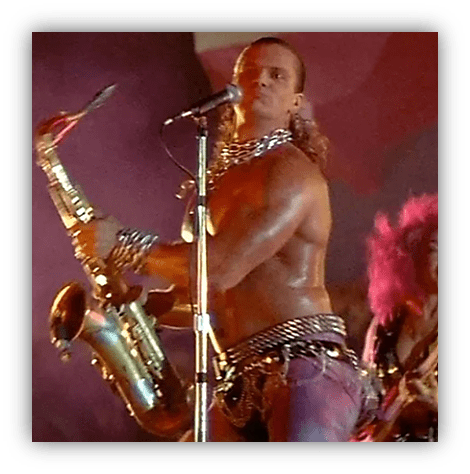
“We Don’t Need Another Hero (Thunderdome)” is a spectacle. It makes Mad Max Beyond Thunderdome sound like a spectacle. It makes me want to watch Mad Max Beyond Thunderdome, even though I know that would be a mistake. And that’s really all you need from a piece of movie merchandise.
“We Don’t Need Another Hero (Thunderdome)” is an 8.
Meanwhile, in Goth Land:

“Close To Me”
by The Cure
Back in 1982, The Cure released “Let’s Go To Bed.” A silly pop song.
At this point they had just released Seventeen Seconds and Pornography and Faith:
A trilogy of the gloomiest records in the store. Coming in the aftermath of Ian Curtis’ suicide, the media started treating Robert Smith as though he was Ian’s replacement. Mad Bob wasn’t crazy about this idea. He wasn’t that mad. He knew where it led. He was paranoidly thinking that Melody Maker and NME and all the rest of them were secretly hoping he’d die. So he wrote a silly pop song to tell them to bugger off.
Ever since “Let’s Go To Bed”, Robert Smith has gone to great lengths to convince people that he’s not as dour and depressed as you might think:
- He wrote songs like “Love Cats.”
- He got into a feud with Morrissey, painting Moz as the genuine dismal human being (and how right he was!)
- He allowed this to be on the cover of Smash Hits.
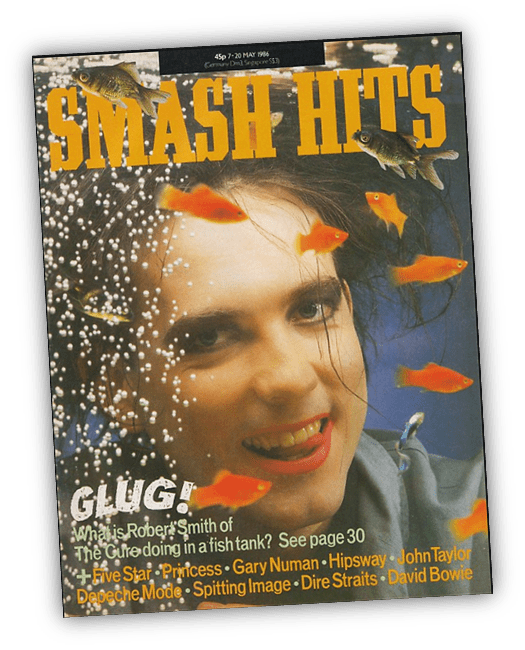
He gave interviews filled with almost as many punch lines as your favourite comedian. He was a hoot!
This is a guy who lied to his record company that he couldn’t tour America because he was afraid of flying, so they’d buy the band tickets on a cruise ship instead.
Now, you all have to imagine Robert Smith on a cruise ship.
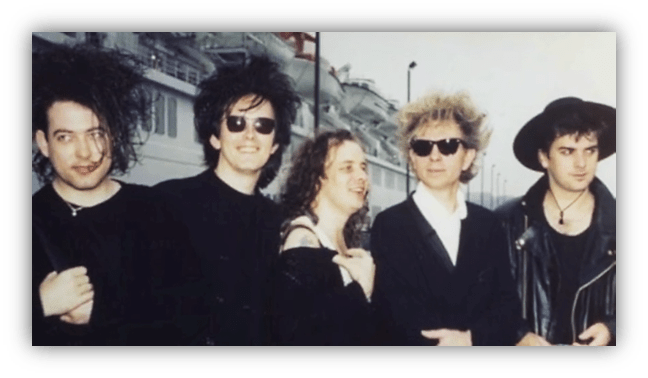
(There’s a video on YouTube, interesting, but not interesting enough to embed, including an interview with what I’m assuming is the Activities Organizer: “they are different from the rest of our passengers… they are younger, they only wear black and they only come out at night, they sleep during the daytime”… so there you have it, confirmation that The Cure are indeed vampires)
What did The Cure do on a cruise ship in the middle of the night?
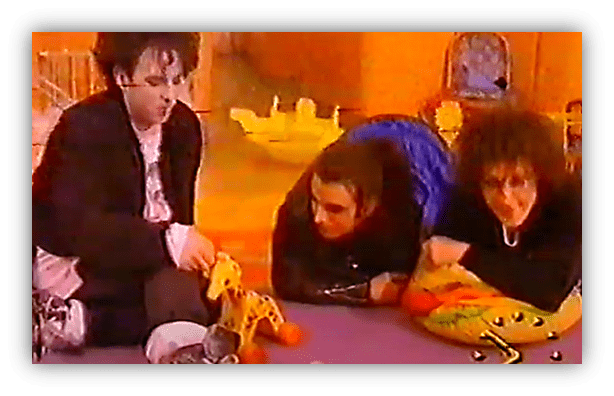
They went to the childcare centre to play with the toys!
And yet somehow that message never quite got through (Disintegration wouldn’t exactly do him any favours), despite the fact that in interviews, Robert rarely looked like anything but a socially awkward cheeky schoolboy.
When The Cure were inducted into the Rock’N’Roll Hall of Fame and Robert uttered those immortal lines: “by the sounds of it, no” there were still people who were like “classic Robert, still moping around.”
“Let’s Go To Bed” is far from the best Cure song, but it set an precedent for much of the rest of their career.
Although they’d continue to write doom-laden poems that seemed to go on and on, they’d also scatter quirky pop songs here and there. Something for fans of both suicide rock and sea-shanties.
“A lot of people want us to be serious. I mean we are serious… there’s a side to us that is serious, which would be dreadful to lose. If we purely did things like “The Love Cats”, I’d hang myself. It’s nice to be able to do both.”
Some considered such tangents a cynical commercial move.
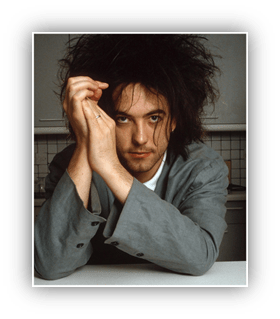
“Oh, there he goes again… Robert’s trying to write a hit…”
But it appears to be more of a strategic move, to wipe out the rubbish on the charts. Naturally, it didn’t work.
“If I wasn’t in a band, I’d start The Cure up now because I still detest the people in the Top Ten as much as I did when we started.”
Robert seemed particularly offended by the very existence of WHAM!
“I could write songs as bad as Wham’s if I really felt the urge to, but what’s the point?”

Instead he wrote songs like “In Between Days,” a deliriously happy sounding song, with the saddest of lyrics, if also, the simplest of rhymes:
“Yesterday I got so old
I felt like I could die
Yesterday I got so old
It made me want to cry”
Ploughing through ear-worm hook after earn-work hook, before Robert even opens his lip-stick smeared mouth.
“With all of them I think, in a perfect world, they’d be Number One. With “In Between Days”, I thought it’d get played on the radio because it was pretty chirpy, and if anything gets played on the radio it generally gets into the chart – a sorry state of affairs.”
I can’t believe it wasn’t a Number One either.
Other than the little detail that it zips past too fast to properly dance – rather than, I dunno, spinning around in a circle until you throw up – “In Between Days” is the perfect pop song (it’s a 10.)
The Cure didn’t reach new peaks of popularity purely due to their perfect pop though. This was the 80s after all, and like Tina Turner, it was all about the hair.
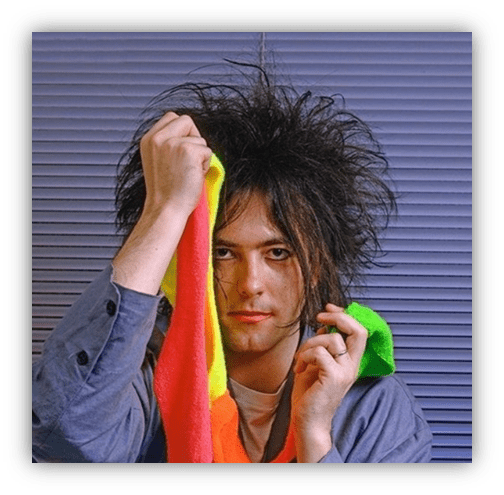
I haven’t done a detailed study on this but I’m pretty sure there’s a strong positive correlation between The Cure record sales and the cost of their hair spray budget.
And in 1985 – the year of “In Between Days” and “Close To Me” – that hair spray budget was pretty big.
Within a year Robert would get so sick of people forever going on about his hair – and his fans copying him to the point that they “look more like me than I do” – that he cut it all off in 1986. This made the Goths sad. Fortunately, there was no Cure album in 1986, so he had time to grow it back again for the Kiss Me, Kiss Me, Kiss Me album – the one with “Just Like Heaven” on it.
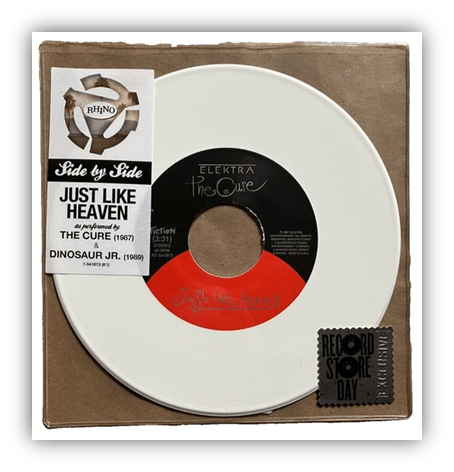
That’s another delightful happy tune.
One minute gloomy, the next minute day-glo, “Close To Me” might be the best of both worlds. In some ways it’s the most Cure single of all; a combination of the whimsical and the woeful, whilst also sounding like nothing they’d ever done. A song about “the sense of impending doom” over the top of a great big stompin’ clappin’ beat that you can dance to. One that, weirdly, doesn’t sound a million miles removed from “Footloose” (I’m serious!)
Not to mention a catchy dinky little keyboard riff that stands out as a classic of the form even in that golden era of catchy dinky little keyboard riffs.
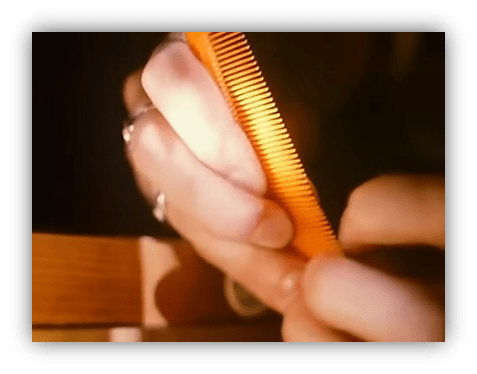
But once again displaying their whimsical charm, in the video they played it a comb.
At the same time there’s the constant sound of Robert’s heavy wheezy breathing in the background, as though he’s having a panic attack. Equal parts catchy and claustrophobic; that’s how you create a classic Cure single.
“I’ve waited hours for this, I’ve made myself so sick
I wish I’d stayed asleep today”
I like to think that this a reference to Robert’s famed habit of staying in bed until the afternoon, an apparently productive use of his time.
“I’m blessed, or cursed, with the ability to remember what I’ve dreamed. When I was 11 or 12, I used to write them down as soon as I woke up, and after doing that for about two years I found that I didn’t have to. It’s good and it’s bad – it’s awful waking up and remembering you’ve just axed to death a family of 15.”
One of those dreams was about a head on a door.
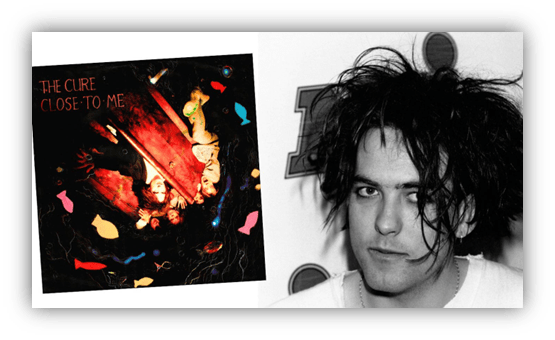
“I used to get these horrible, nightmarish visions of this head that used to hover in the chink of light that would come when the bedroom lights were turned off and the door was just ajar. The shaft of light that came from the hallway used to illuminate this patch of wallpaper and it would come to life and prophesy doom to me through the night whenever I put my eyes in that general direction.”
It was a “horrible grinning man who’d appear on top of the bedroom door and laugh.”
If all of this sounds like a bit much, take into account that Mad Bob had chickenpox at the time.
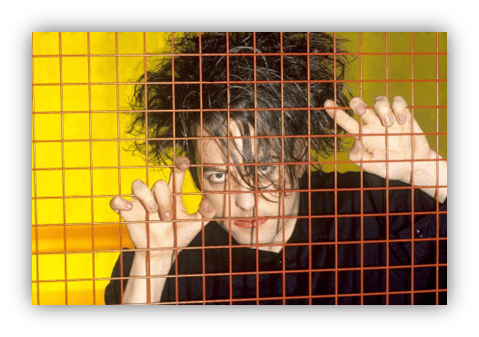
Calamine lotion is a hell of a drug.
Also take into account that Robert liked to lie a lot. It’s the only way of keeping interviews interesting.
So that’s what “Close To Me” is about. Or not. Or maybe it is what I always thought it was: about feeling nervous and nauseous because you have a hot date.
“Close To Me” is a 9.
Meanwhile, in Raspy Rockers Land:
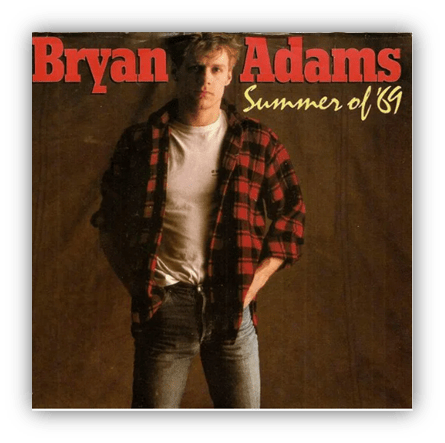
It’s “Summer Of ‘69” by Bryan Adams
Is it about the year, or the sex position? That is the fundamental question everybody asks about “Summer Of ’69.”
The ultimate 80s rock party record has been reduced to a question of whether or not Bryan Adams is singing about what you think he’s singing about.
So what exactly is Bryan Adams singing about on “Summer Of ‘69”?

“Summer Of ‘69” is about getting your first guitar, starting your first band, and sure the band utterly fails to go anywhere, and they probably suck.
But it doesn’t really matter, because you have accomplished the only real goal of any boy who starts up a band when they are young. You’ve gotten laid!
Congratulations Bryan Adams! Bryan Adams got laid!!
More thematically, “Summer Of ‘69” is about nostalgia.
Bryan Adams, it appears, is a very nostalgic lad. Bryan was thinking about his younger years. When there was only you and him, and you were young and wild and free. Bryan seemed to think about his younger years a lot. And no wonder, they were the best days of his life.
“Heaven” and “Summer Of ‘69” are of course, very different songs.
One is fast, for example, and the other is slow. But they have more in common with each other than just Bryan’s tendency to look back to simpler times.
The more observant of you will have noticed that the girl in the video for “Summer Of ‘69” and the girl in the video for “Heaven” are the same girl.
She’s also in the video for “Run To You”, racing towards Bryan playing guitar by himself in the middle of a snowstorm, both dressed far too lightly for such weather, because they are Canadians and they can’t feel the cold.
Who was that girl, that kept on popping up in the Reckless album promotional material? And what does it all mean?

That girl was Lysette Anthony.
Lysette’s best-known role at that point was whatever this is?
She would later be Dave Gahan’s sexy love interest in Depeche Mode’s “I Feel You” video. Is that a step up? A step sideways?

I feel pretty certain it’s a step-up from Krull.
Further investigation indicates that “Summer Of ‘69”, “Heaven” and “Run To You” are a trilogy:
Telling the story of Bryan’s first teenage love – or at least his first time – reuniting after years apart. This explains why in “Heaven”, once Bryan sees her in the crowd at one of his shows, he instantly races off after all. It’s not because he sees a cute girl in the crowd and suddenly must have her! They have a history.
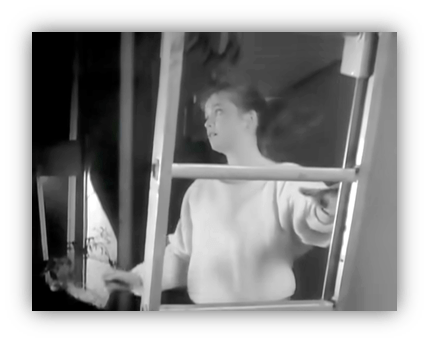
She’s the reason Bryan’s teenage years were the best days of his life.
This would have been extremely difficult for casual fans to follow at the time however, since the order of the single releases – first “Run To You”, then “Heaven”, the “Summer Of ’69” – was the reverse order of how the story was supposed to be told.
The video for “Run To You”– despite being the first single – is the happy ending (and “happy ending” is definitely the wording that Bryan would choose – he is after all, the one responsible for turning “Summer Of ‘69” into a dirty joke…) The only way these videos – the only way this love story makes sense, is if you watch the Reckless video album.
These videos were not just for MTV. These videos were made to the consumed as a story. These videos are part of a Bryan Adams’ musical!
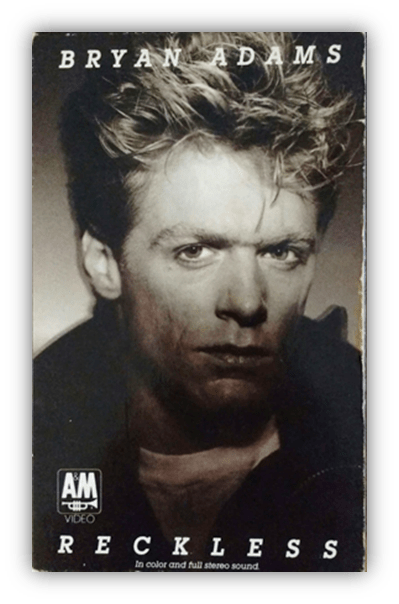
That’s 30 minutes of Bryan and his high school sweetheart – Lysette, playing the role of Natalie – being reunited after many, many years.
Bryan spends a lot of time sitting on abandoned cars, in the middle of a field, with a dog. He gives a good impression of a guy who spent his childhood on a farm in Canada, instead of jet-setting around the globe with his father, who was in the Canadian diplomatic corp.
Within the narrative of this “video album”, “Summer Of ‘69” sets everything in motion.
We see – in a series of flashbacks – their teenage love affair, and then, at the end, Natalie rides past Bryan and the boys, rockin’ out in a garage, her useless boyfriend at the wheel. She smiles. “Who’s that?” useless boyfriend asks.
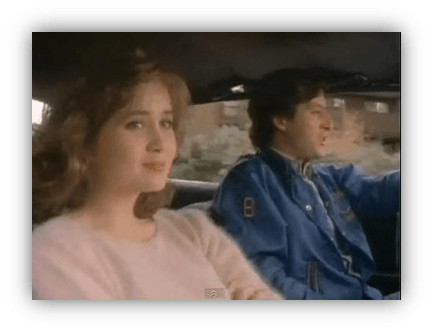
“Nobody,” Natalie smirks.
But now Bryan is on her mind. So she goes to the show in “Heaven”, they reunite in the snow in “Run To You”… there are other songs but they are unimportant… Bryan gets his happy ending. None of which really answers the fundamental question though: Summer Of Love, or 69-ing?
Now Bryan – as it has often been pointed out- was nine or ten in the Summer of ’69.
Too young, in other words, to experience a single thing he was singing about.

Not even buying a six-string at a Five-and-Dime.
Bryan would buy a guitar at a Five-and-Dime – it was an imitation Les Paul – but not until 1971. Before that he’d bought an imitation Stratocaster, but that one was not purchased at a Five-and-Dime, and anyway, that was in 1970. Young Bryan liked buying imitation guitars, begging the question: does an imitation guitar count as a “real six string”?
But Bryan’s fellow songwriter, Jim Vallance, was quite a bit older, and would have been in his late teens in 1969.
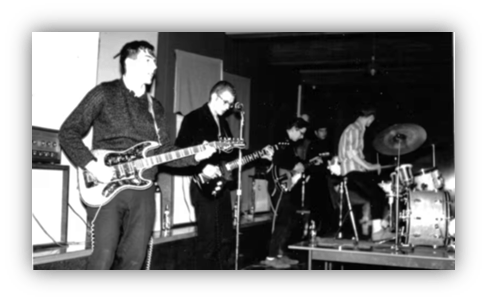
Jim was old enough to have been in a band in 1969, and, in fact, he was. He’d been there!
Nothing “Summer Of ‘69” mentions exactly meshes with the pop cultural memory of the “Summer Of ‘’69” – Woodstock, Vietnam, LSD – but for the vast majority of American youth all of that just passed them by. For most kids, it was just another summer, and buying a six string, playing it til your fingers bled, spending evenings down at the drive-in, and standing on your mama’s porch, was the sum total of their experiences.
“Summer Of ‘69” is their story.

In the debate of whether “Summer Of ‘69” was referring to the year or the sexual position, a common consensus has gradually formed, in which it is presumed that Jim wrote his bits about the year, but then Bryan had to go and ruin it all by singing “Me and my baby in a sixty-nine” at the end, just for the lols. Bryan was, after all, the more immature one of the duo, as well as the youngest.
Then again, Bryan is singing about being a teenager – or feeling nostalgic about being a teenager – so a certain puerility should probably be expected.

For if teenagers like anything more than rockin’ out, it’s jokes about 69-ing.
As we would discover later on, rockin’ out wasn’t exactly Bryan Adam’s strong suit.
Sure, he looks as though he’s having fun rockin’ out with his friends in the garage in “Summer Of ’69.” Bryan also knows the basics, such as that he has to cry out “YEAH!” before every great big drum roll or guitar solo.
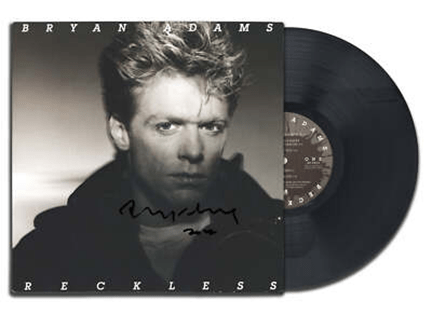
But I think it says a lot that, when he thought he’d finished the Reckless album, and proudly played it to his manager, that manager looked confused, turned to Bryan and asked: “where’s the rock?”
That early version of Reckless already included a version of “Summer Of ‘69” but apparently it didn’t rock… Bryan had to go back into the studio and rough-it-up a little. The end result – the record we know and love today – was apparently rockin’ enough…
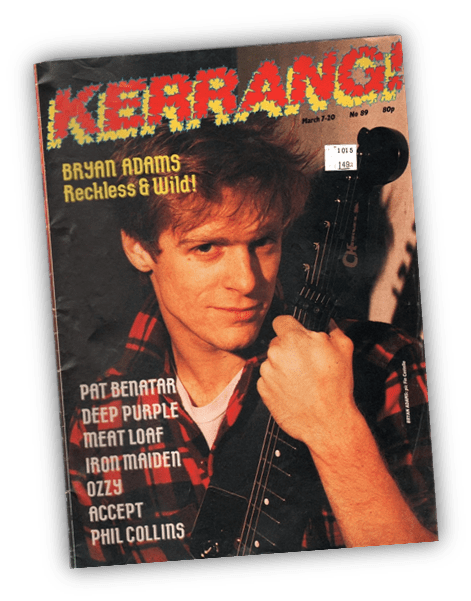
That Kerrang! –a metal magazine! – named Reckless their 1985 “Album Of The Year” – which is insane – and the 49th “Greatest Heavy Metal Album of All Time” in 1989. Like, really?
Presumedly Kerrang! would never have granted him that honour if they knew in a few years he’d be recording “Everything I Do (I Do It For You)”, “Have You Ever Really Loved A Woman?” and a duet with Barbra Streisand.
“Summer Of ‘69” is a 9.
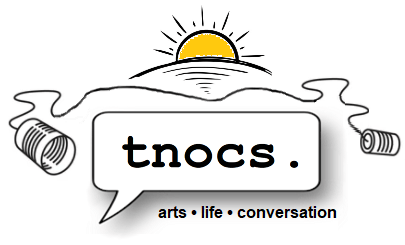


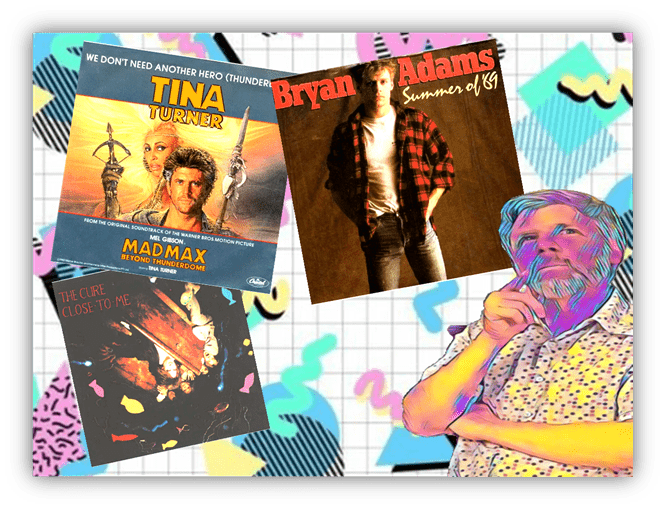
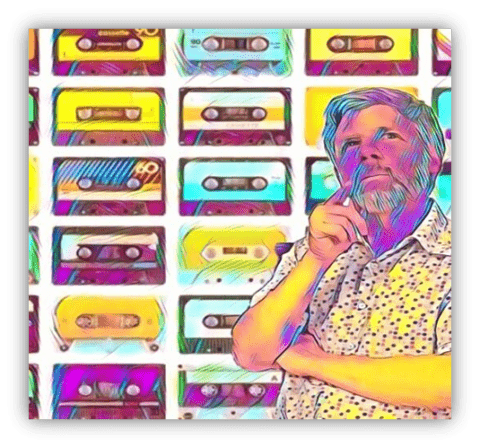


Ugh…of all of Bryan Adams’ sound-alike rockers (some of which I genuinely like), why in the world was it “Summer of ’69” that had to become bigger than life?
But I’m really here to praise “We Don’t Need Another Hero”. I LOVE that stinking song. There are no other Tina Turner songs that I’m happier to hear. This is a song where the chorus truly reigns…that chorus is so great! That saxophone! The children’s choir! (which I don’t always like, but it really works here). It is a total 10 for me. And I can speak for Tom in the adjacent cube, too…he would give it a 10 as well. We have talked numerous times over the years about our love for this song.
Hello Tom In The Adjacent Cube!
The Bryan Adams’ Sound-alike Rockers sounds like a name for a Bryan Adams tribute band that ran out of ideas of what to call themselves.
Presenting the Official It’s The Hits Of August-ish 1985 Spotify playlist! The “Close To Me” Edition!
Featuring Cocteau Twins, Siouxsie & The Banshees, Sisters Of Mercy, The Birthday Party, Jesus & Mary Chain – and The Cure of course – it’s a very dark, and a little bit gothic, mostly 80s party playlist!!
(A “Summer Of ’69” Themed Edition coming up soon!)
https://open.spotify.com/playlist/3wTDEWmDWWQbcZOVAgcpIj?si=dcbada5ca303499a
Some nice stuff on here. I will need to take the plunge on this when I’m done transcribing the sax solo for Pink Floyd’s Us and Them.
Are you familiar with the October Project? Mary Fahl, the lead singer, covered “Us and Them”. Talk about bad timing. I think they would’ve found a bigger audience pre-Nirvana. The record company liked them. There was a second album. Fahl has a very unique voice. Hard to imitate. But I think Paul Rudd could pull it off.
No, I am not. listening now. Interesting take. Even more atmospheric than the original.
And, as promised, here’s the “Summer Of 69” party playlist!
Featuring Rick Springfield, Pat Benatar, The Cars, Huey Lewis & The News, Don Henley… and Bryan Adams of course… it’s a very summer rock hits of the 80s party playlist!!
https://open.spotify.com/playlist/1darwY08CbqIWI1oDc9ttC?si=65daa077d1dd460a
The cover art for Hayden’s The Hazards of Sitting Under Palm Trees always reminded me of “The Boys of Summer”.
Listened to a good portion of this so far. Some of it I know. Some I don’t. Some I like. Some I don’t. The Killing Joke song is not one I knew and I think it’s going to stick with me. I like the metal-esque rhythm guitar. The Gang of Four track was playing in the car when I drove my daughter to school today and she didn’t shut it off. Progress.
As DJPD alludes to, Tina’s chart stats in the UK are impressive.
35 top 40 singles with 11 top 10s.
I’d always assumed she was massively successful everywhere so it was a surprise to me to find that wasn’t the case in chart terms.
We Don’t Need Another Hero may well have aged better than the film. I won’t be watching it to check.
The Cure can do almost no wrong for me. I love that they swing from upbeat pop to miserabilist angst. That’s just human existence. Some days you’re up, some you’re down. The Cure are there for you whatever.
Even at their most morose I’d take them over Summer Of 69. Its overplayed and worn out. That’s hilarious that Kerrang lauded him so highly in the 80s. Almost hilarious as Robert Smith’s reaction to the inane red carpet questioning. Tell it like it is Bob.
Whatever lack of extensive chart success Tina had in the 60s/70s here to me is eclipsed by just how much she influenced rock and metal vocalists in the decades to come. There is a direct lineage from her to Brian Johnson of AC/DC for example. Once I got around to digging into her old stuff, I picked up on it quickly. A good place to start is an anthology called Funkier than a Mosquito’s Tweeter.
Thought for the day- Bryan Adams is just ok.
I’ve been to Nutbush. There’s not much there. It’s an intersection of a couple roads in the middle of farmland. there’s a run down general store with a worn out sign that says “Welcome To Nutbush, Tennessee Birthplace of Tina Turner.”
https://maps.app.goo.gl/ot348Wci7uA6rTmPA
It’s 15 miles off I-40 so not a bad side trip if you’re driving across West Tennessee, but not worth a special trip. However, right off the Interstate is the West Tennessee Delta Heritage Center / Tina Turner Museum. It’s definitely worth a stop, with not only her gold records and stage wear, but exhibits about her and other musicians from the area: Carl Perkins, Eddy Arnold, and of course, Elvis Presley. They even moved Turner’s one-room schoolhouse and Sleepy John Estes’ house to the site.
https://www.westtnheritage.com/
You’ll find it at Exit 56 right behind the McDonald’s.
On the country side of the tracks, Janie Fricke had a hit with a song of warning…
https://www.youtube.com/watch?v=jP6Ncx5VmNE
Coincidentally, I had to get a small Allen wrench at the hardware store, and it’s called the Teeny Turner.
This reminds me of Tina Turner meeting the Tuna Turner on Late Night with David Letterman.
https://youtu.be/ThGey2EXaKs?si=OuEjUEUhrYp1hGUs&t=63
That Kerrang! cover, what is Phil Collins doing on it? I thought the British were serious about their heavy metal? What’s going on with this Phil Collins and Bryan Adams are metal nonsense? Meat Loaf too. I feel confused by all of this.
Music became a lot more fun when I stopped caring about what’s cool and what’s not cool. I like Abacab a lot. One of my favorite moments on the mothership was getting a Laura Mulvey fan to give “Keep It Dark” a listen because it reminded me of “Supernova”.
What does coolness or caring have to do with it? This is about genre. If I said Metallica was making jazz, that would be wrong. Little Mix aren’t making rap. Taylor Swift, not reggaeton. Phil Collins, not heavy metal.
“We Don’t Need Another Hero” should NOT work at all:
And, yet… it is glorious. So, so , so very glorious. We did not deserve that song.
Pretty bold of Robert Smith to say he could write songs as bad as Wham!’s when “Friday I’m In Love” exists.
I like “Summer of ’69” but always got hung up on the math – like, HOW OLD is Bryan Adams again?
I remember Robert Smith telling a journalist that it’s harder to write a “dumb” song. “Doing the Unstuck” is almost written in the same vein. Out of the three singles, “Friday I’m in Love” is the banger, sandwiched between two goth-y ones. I think “Doing the Unstuck” could’ve charted. I wonder if the band(or is it the record company?) had a debate about which happy song to release.
The Summer of ’85 was a good time! Can’t believe it was 40 years ago…
Summer of 69 is more of a 6 than a 9 to me, thanks somewhat but in part due to overplaying. By the way, Bryan Adams is supposed to be performing near me in two months and the promotional ad for it with his face being punched doesn’t entice me at the least (apparently I’m not alone; it’s far from a sellout even with Pat Benatar as his opener): https://www.ticketmaster.com/bryan-adams-roll-with-the-punches-raleigh-north-carolina-11-05-2025/event/2D006295C78259DF